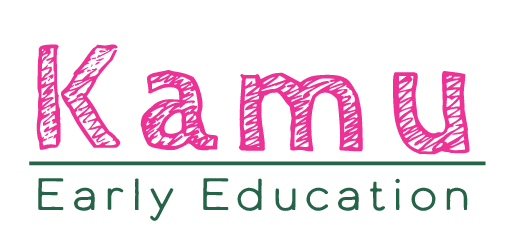It Takes a Team To Help a Child Grow
Kindergarten is a lively place filled with movement, activities, laughter and a few tears from time to time. Everything seems to just flow naturally and smoothly. But underneath there has been a group of staff members working in coordination and making hundreds of small decisions every day to support children’s learning, development and growth. You might not notice this, but it’s happening every minute when children are around.
The force working in the frontier closely with children are kindergarten teacher, child carer (conventionally known as “nursery nurse” or “practical nurse”), group assistant, and kindergarten assistant. I will briefly tell what they do in an ordinary day.
Kindergarten teacher
Kindergarten teacher carries pedagogical responsibility for a children group, which means the teacher
plans and leads daily activities that support children's learning through play and interaction
observes each child to understand their development, strengths, and possible support needs
creates, follows, and updates each child’s personal early education plan (vasu) in collaboration with the family to support the child’s individual growth, learning, and well-being
ensures the learning environment supports every child’s emotional, social, cognitive, and physical growth
leads team reflection and communication with families to ensure a shared understanding and consistent support for each child’s development.
While children are doing everyday things, such as painting, playing, arguing over toys, or using bathroom, kindergarten teachers are closely observing how children act, constantly assessing what each child might need (emotionally, developmentally, and socially), then subtly adjust activities, guidance, or the environment to support each child’s learning and well-being.
Child carer
While kindergarten teacher is the pedagogical leader in a child group, child carer brings the plan into daily practice through interaction. Child carer
· helps children with everyday tasks like dressing, hygiene, eating, and rest in an encouraging and patient way to teach independence and self-care.
observes how each child is feeling and behaving and offer comfort and guidance when needed
joins play and activities to help children learn and grow according to the group’s educational plan
works closely with the teacher and other staff to share responsibilities and ideas
communicates with families to share how the child is doing and help build trust and cooperation between home and daycare
Child carer focuses especially on the daily routines, emotional support, and individual care to support children’s physical growth, emotional well-being, and learning.
Group assistant
Group assistant assists in daily routines led by the kindergarten teacher and child carer. They focus on children that need extra support, especially those that benefit from 1:1attention. Group assistant
encourages independence while providing hands-on help during dressing, hygiene, and eating
gives gentle guidance to help children join in play, follow the day’s structure, and interact with peers
assists in care and educational routines led by the kindergarten teacher and child carer
supports pedagogical activities without leading them independently, and works alongside the teacher and child carer, sometimes under the guidance of a special education teacher
participates in team discussions, follows agreed practices, and adapts to sudden changes in the day with flexibility
Group assistant acts as a bridge that connects children’s needs and adults’ support. Group assistant can quickly step in wherever help is needed, which helps teacher and child carer focus on their own roles to plan, observe, or lead activities. An attentive and flexible group assistant can better ensure teacher’s and carer’s focus on observing and guiding children.
Kindergarten assistant
Kindergarten assistant is the quiet hero who keeps the physical environment clean and meal served on time. Kindergarten assistant
set the table, distribute food, wash dishes and tidy up dining and kitchen areas
cleans kindergarten spaces
takes care of laundry
prepare nap areas
give a helping hand wherever needed to keep the day running calmly and on schedule
Kindergarten assistants play a vital role in maintaining the daily rhythm and providing a sense of order and reliability to children and the rest of the staff members.
Supporting children’s growth together
If we imagine kindergarten as a garden, each children’s group is like a planting box and the children are the seeds. Staff members are the rich soil that support growth and teamwork among staff is the water and sunshine that help each child take root and flourish.
Early childhood education is a profession where care, learning, and teaching go hand in hand. Young children live and learn in the present moment. Whether during a meal, in hygiene care moment, in dressing up, in transition, in free play, or a guided activity, every experience helps children construct their own understanding about the surrounding world and develop skills. Every day is full of learning opportunities, big and small. In other words: Every moment is a pedagogical moment.
To support young children’s learning, daycare work requires adults to be physically active, emotionally present, and quickly respond to children’s needs. Staff need to recognize learning opportunities not only for individual children but also for the whole group throughout the day. This is only possible through close teamwork among staff members.
At Kamukoti, teachers, nursery nurses, group assistants, and kindergarten assistants work closely together. We all observe. We all support. We all reflect. We rely on each other, respect one another, and make daily decisions together based on the children’s needs. Annual goals, weekly themes, and daily plans are developed together. Tasks and responsibilities are shared, and everyone understands their roles. Staff maintain open and active communication with each other. In a small kindergarten like Kamukoti, it is easy to observe, listen, and respond to each other, not only within each group but also across groups. Over time, this creates mutual understanding and trust among staff. There is no need to explain a lot or give concrete instructions. Everyone promptly gives each other a helping hand when something comes up or when schedules need to be adjusted.
